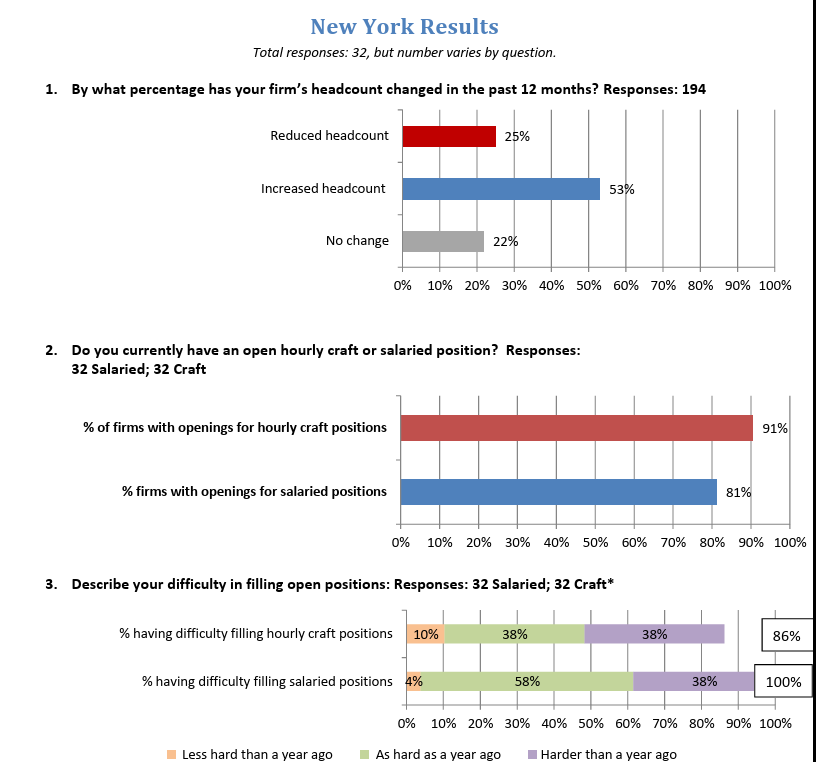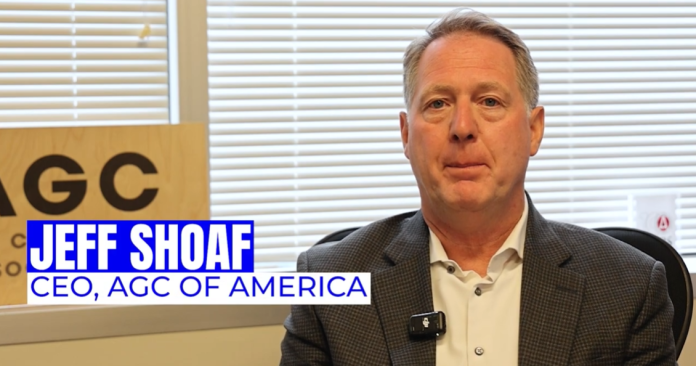New York Construction Report staff writer
Construction workforce shortages are the leading cause of project delays nationwide, with new immigration enforcement measures affecting nearly one-third of firms, according to a new survey conducted by the Associated General Contractors of America (AGC) and the National Center for Construction Education and Research (NCCER).
The survey showed:
- 92% of construction firms are struggling to hire qualified workers
- 1 in 3 contractors are impacted by immigration enforcement
- labor shortages drive project delays, cancellations and redesigns
“AGC has been working on immigration issues for a couple of decades, knowing full well that immigration provides a pool of workers for the construction industry and has done that for centuries,” Jeffrey Shoaf, CEO of AGC of America in a video. “The cultural focus on four year colleges tied with recent federal focus on immigration has made problems with labor in construction more acute.”
 The survey found that 92 percent of construction firms report difficulty in filling open positions, while 45 percent say labor shortages have directly caused project delays. The shortage spans both craft workers and salaried positions, with 88 percent of firms seeking craft workers and four out of five looking for salaried employees.
The survey found that 92 percent of construction firms report difficulty in filling open positions, while 45 percent say labor shortages have directly caused project delays. The shortage spans both craft workers and salaried positions, with 88 percent of firms seeking craft workers and four out of five looking for salaried employees.
“Construction workforce shortages aren’t just a problem for the industry,” said Ken Simonson, AGC chief economist. “Projects of all types are being delayed because there aren’t enough qualified workers available.”
One contributing factor is the lack of federal investment in construction workforce training. The survey indicated that 57 percent of firms report available candidates lack the necessary skills or licenses. Moreover, only 10 percent of firms utilize temporary work visa programs, such as H-2B visas, to fill positions.
Immigration enforcement has also taken a toll. Nearly 28 percent of firms report being affected by enforcement activities over the past six months. Specifically, 5 percent of firms had worksites visited by immigration officials, 10 percent saw workers leave or fail to show up due to enforcement concerns, and 20 percent reported subcontractors losing workers. Impacts varied by state, with firms in Georgia, Virginia, Alabama, Nebraska, and South Carolina most affected.
Labor shortages were cited as the top reason for project delays, with 78 percent of firms experiencing at least one delayed project in the past year. In response, seven out of eight firms raised base pay for workers, and 42 percent increased spending on training and professional development. Firms are also leveraging technology, with 55 percent using online recruitment strategies and 52 percent engaging with career programs in schools and technical institutions.
Trade issues are compounding the challenges. Sixteen percent of firms reported project postponements or cancellations due to tariffs, 41 percent raised prices, and 39 percent accelerated purchases in anticipation of new tariffs.
“The survey underscores the urgent need to grow our construction workforce,” said Boyd Worsham, NCCER President and CEO. “Expanding access to training and career opportunities strengthens contractors’ ability to deliver projects and benefits communities nationwide.”
AGC is calling on Congress and the administration to increase funding for high school career and technical education programs, enact a Workforce Innovation and Opportunity Act that dedicates at least 50 percent of funds to workforce training, and create new lawful pathways for foreign workers in construction.
“The best way to keep the construction industry a driver of economic growth is to ensure it has both the workforce and the demand needed to continue building the American economy,” Simonson said.
The 2025 Workforce Survey, conducted in late July and early August, collected responses from nearly 1,400 firms across the country, representing both union and open-shop operations of all sizes.
Click here for survey materials including national, regional and state fact sheets, survey analysis and event remarks.










